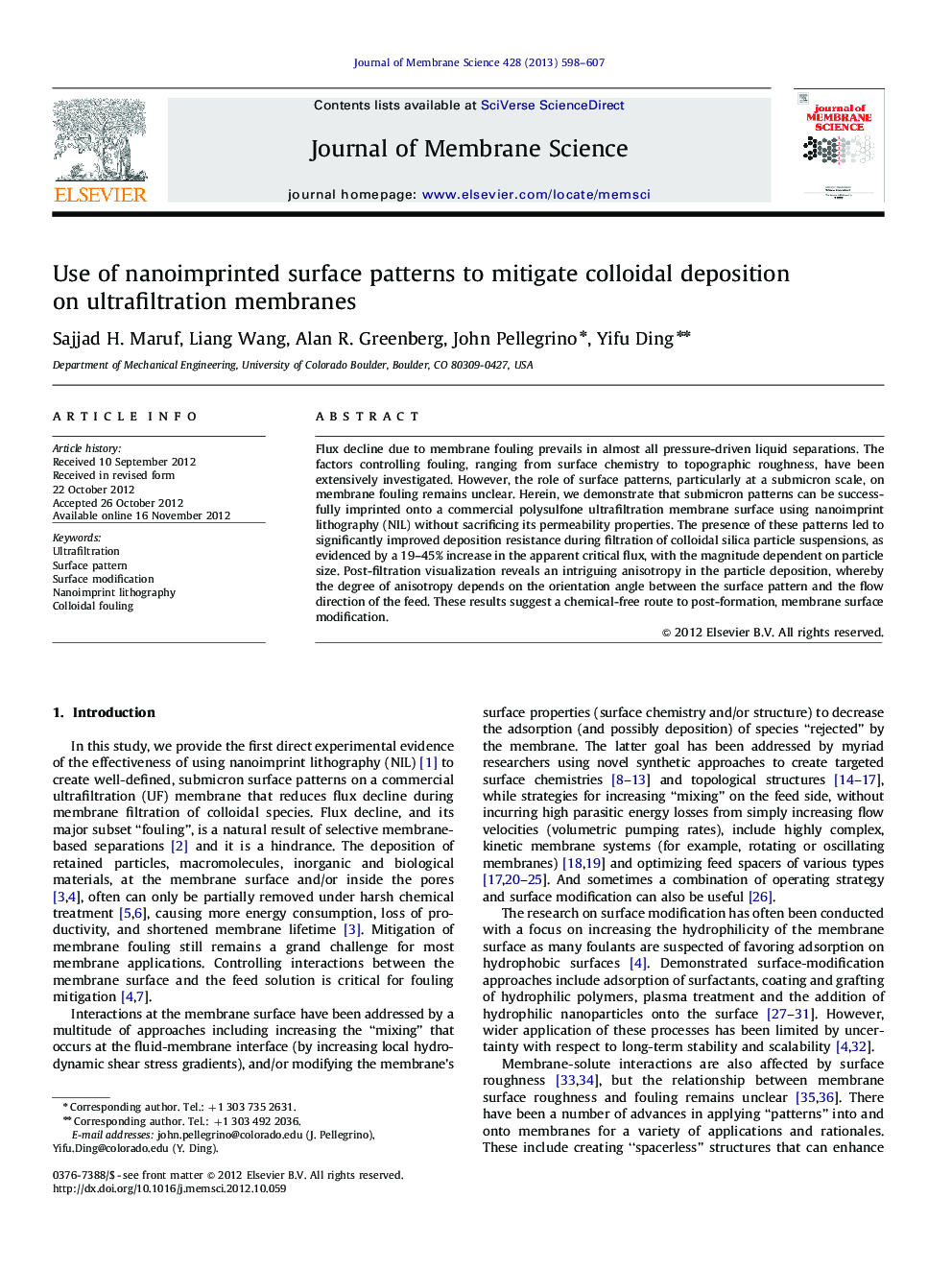| Article ID | Journal | Published Year | Pages | File Type |
|---|---|---|---|---|
| 634654 | Journal of Membrane Science | 2013 | 10 Pages |
Flux decline due to membrane fouling prevails in almost all pressure-driven liquid separations. The factors controlling fouling, ranging from surface chemistry to topographic roughness, have been extensively investigated. However, the role of surface patterns, particularly at a submicron scale, on membrane fouling remains unclear. Herein, we demonstrate that submicron patterns can be successfully imprinted onto a commercial polysulfone ultrafiltration membrane surface using nanoimprint lithography (NIL) without sacrificing its permeability properties. The presence of these patterns led to significantly improved deposition resistance during filtration of colloidal silica particle suspensions, as evidenced by a 19–45% increase in the apparent critical flux, with the magnitude dependent on particle size. Post-filtration visualization reveals an intriguing anisotropy in the particle deposition, whereby the degree of anisotropy depends on the orientation angle between the surface pattern and the flow direction of the feed. These results suggest a chemical-free route to post-formation, membrane surface modification.
Graphical abstractFigure optionsDownload full-size imageDownload high-quality image (334 K)Download as PowerPoint slideHighlights► Surface patterns created on commercial, UF membrane using nanoimprint lithography. ► Nanoimprint patterned (NIL) membranes retained permeability and protein rejection. ► NIL-membranes had higher critical flux than non-patterned ones. ► Particle deposition on NIL-membranes depended on the flow/pattern orientation.
